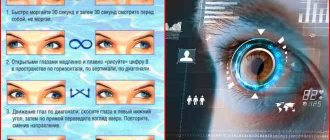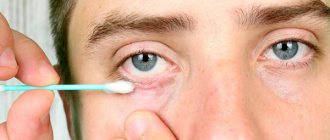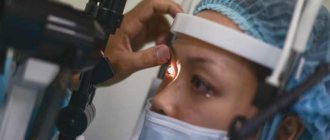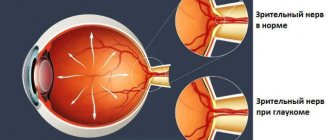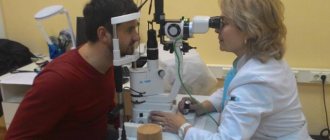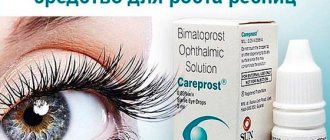with a capacity of 5 l/min:
Invacare PerfectO2
, Philips EverFlo, Longfian JAY-5A, AirSep VisionAir, Bitmos OXY-6000 5L with a capacity of 6 l/min: Bitmos OXY-6000 6L with a capacity of 10 l/min: Lonfian Jay-10
German pulse oximeter available manufactured by: Riester Ri-Fox N
Home → Physiotherapy devices → Magnetic therapy devices → Magnetic therapy → Magnetic therapy for eyes
Magnetotherapy (16) Infrared and phototherapy (10) Vibroacoustic therapy (6) Laser therapy (4) Quantum therapy (2) Thermotherapy (3) Electrophoresis and Galvanization (5) Electrical stimulation (3)
Magnetic radiation is painless and safe, therefore magnetic therapy for the eyes is used as a hardware treatment for ophthalmological diseases. Magnetic therapy involves the interaction of charged particles of body tissue with a low-intensity magnetic field. This interaction has a positive effect on physical and chemical processes. Blood vessels dilate, blood supply and cell trophism improve, regeneration processes are activated, muscles relax, anti-inflammatory and decongestant effects are observed.
The advantage of magnetic therapy for eye treatment is that direct contact of the diseased organ with the radiation source is not required. That is, magnetic currents penetrate the eyelid and the bandage, which is important in the case of, for example, serious injuries.
Magnetic therapy for vision treatment is prescribed for pathologies such as:
- inflammatory diseases of the eyelids and eyes (conjunctivitis, blepharitis, keratitis, uveitis);
- retinal dystrophy;
- myopia;
- farsightedness;
- disturbances of accommodation;
- swelling of the periorbital region;
- glaucoma in its initial form;
- optic nerve atrophy;
- cataract;
- corneal erosion.
In addition, magnetic therapy for the eyes helps relieve eye strain (for example, when working at a computer) and is used to prevent fatigue and to preserve visual functions.
Magnetophoresis is very effective - the administration of drugs under the influence of a magnetic field. One example is magnetic therapy with taufon. This drug contains taurine and promotes the regeneration of damaged cells. And magnetic radiation enhances its penetration into tissues. Therefore, this technique is often used in magnetic therapy for cataracts, injuries and to prevent corneal dystrophy.
Magnet treatment is suitable for both children and adults. Magnetic therapy for the eyes for children often acts as a method of hardware treatment for myopia, treatment of which in the early stages gives good results. An additional advantage of magnetic therapy for myopia is that this method does not cause discomfort and does not require special training or a rehabilitation period.
As a result, there is a decrease in eye fatigue and intraocular pressure, improved accommodation, and a halt in the development of the disease. Magnetic therapy for myopia in children is carried out under adult supervision. To achieve the greatest effect, this type of treatment is combined with medication and special exercises.
There are no side effects during magnetic therapy for the eyes, but it should only be used in consultation with a doctor, as there are limitations.
Contraindications to magnetic therapy include:
- the presence of foreign bodies in the eyeball;
- cardiovascular diseases;
- hypotension;
- tuberculosis;
- mental disorders;
- neoplasms;
- hemorrhages.
Although there are a variety of portable magnetic therapy devices on the market, it is not recommended to use them to treat eye diseases without consulting a specialist.
Magnetic therapy devices
[td]
Physiotherapy methods and general provisions
Physiotherapeutic procedures are prescribed individually, depending on the diagnosis.
For eye diseases, the following physiotechniques are used in ophthalmology:
- electrophoresis;
- mechanotherapy;
- phonophoresis;
- UHF;
- electrical stimulation;
- laser therapy;
- phototherapy;
- magnet treatment;
- magnetophoresis;
- diadynamophoresis;
- quantum therapy, etc.
Electrophoresis
The technique is considered widespread and represents a physicochemical combination of the effects of solutions of medications with a constant electric current.
During electromilling, galvanic reactions occur, heat is generated and the pH of the environment changes. Ions are redistributed in cells, promoting the formation and activation of biochemically active elements. The appearance of reactions helps stimulate microcirculation, activate metabolic processes and secretory activity of the glands, and increase the permeability of the blood-ophthalmic barrier. Electrophoresis is used to eliminate degenerative eye diseases and chronic pathological conditions.
Mechanical treatment
The procedure stimulates blood circulation, improving tissue nutrition.
This type of physiotherapy consists of the following methods:
- massage;
- UZT;
- vibration therapy, including phonophoresis.
Zones of rarefaction and compression alternate at the level of cells and subcells, resulting in the effect of variable acoustic pressure. Ultrasound helps relieve inflammation and has antispasmodic, analgesic, metabolic and defibrosing effects. The procedure is prescribed for the following ailments:
- chalazion;
- processes of a dystrophic nature;
- cicatricial diseases of the skin of the eyelids.
Phonophoresis
Physiotherapy consists of the simultaneous acoustic impact of ultra-high frequency vibrations and the use of medications. Ophthalmic physiotherapy has an anti-inflammatory, metabolic, antispasmodic, analgesic and defibrosing effect. Indications for use:
- chalazion;
- cicatricial lesions of the skin of the eyelids;
- corneal opacities;
- adhesions after surgery;
- fibrous disorders of the lining of blood vessels and the retina;
- macular degeneration.
UHF for eyes
A popular procedure for the treatment of stye.
The organ of vision is exposed to electric fields with ultra-high frequencies. This leads to vibration of ions, rotation of dipole molecules and polarization of dielectric particles. As a result, intracellular heat is formed, the level of which is influenced by the dielectric properties and electrical conductivity of tissues. UHF is used for the following pathologies:
- dacryocystitis;
- barley;
- keratitis;
- uveitis
Electrical stimulation
The effect of weak electric current pulses with a certain sequence and structure on the neuromuscular and sensory tissues of the eye is carried out, functional induction in case of excessive anabolism. As a result, the activity of structures that retained their viability when the conductivity of nerve impulses decreased was restored.
There are the following types of electrical stimulation:
- percutaneous;
- transconjunctival;
- implantation
The most commonly used is transcutaneous electrical stimulation. Indications:
- optic nerve atrophy,
- retinal dystrophy;
- myopia in children;
- open-angle glaucoma, etc.
Laser treatment
Laser therapy is suitable for the treatment of vision pathologies in adults.
This is one of the most accessible and effective techniques that can solve the problems of refractive error - myopia in children and adults, astigmatism and farsightedness. During laser treatment, coherent monochromatic radiation from a generator irradiates specific areas of the eye. A photodynamic effect occurs, activating the cellular nuclear apparatus and intracellular enzyme systems.
Physiotherapy helps relieve pain, spasms and inflammation. Physiotherapy helps eliminate swelling, restore tissue, increase local immunity, and improve trophism. To irradiate different areas of the eye, laser devices with different types of radiation are used. The duration of the course is up to 10 sessions. Indications for use:
- blepharitis;
- barley;
- keratitis;
- corneal ulcers;
- inflammatory diseases of the eyelids;
- spasms of accommodation;
- retinal dystrophy.
Phototherapy
This treatment method uses the energy of electromagnetic oscillations of light and other waves that are close to them. Light therapy has the following therapeutic effect:
The procedure will help eliminate swelling and inflammation.
- anesthetic;
- decongestant;
- anti-inflammatory;
- regenerative;
- desensitizing;
- antispasmodic;
- bactericidal;
- vasoactive;
- vagotonic;
- immunocorrective.
Magnetic therapy: the essence of the procedure
This method uses alternating and constant intermittent magnetic fields. The procedure has an anti-edematous, analgesic and anti-inflammatory effect. As a result, blood microcirculation improves, tissue regeneration is stimulated, and the surfaces of ulcers are healed. The main feature of the physiotherapy procedure is that the magnet is capable of treating the eye remotely, without contact of the organ of vision with the inductor. Indications for use:
The method is based on the effect of an alternating magnetic field directly on the source of pathology.
- blepharitis;
- barley;
- keratitis;
- iridocyclitis;
- optic nerve atrophy;
- complications after operations;
- keratoconus;
- retinal dystrophy;
- myopia;
- retinal ischemia;
- eye hemorrhages.
Magnetophoresis: features
In this type of physical therapy, medications are administered using a low-frequency magnetic field. The result is not only the effect of the drug, for example, “Noshpa”, “Taurine” (tonic), which are administered in normal doses. In this case, a trophic vasoactive, hypocoagulating, local analgesic and anti-inflammatory effect of the magnetic field occurs.
With magnetophoresis there is no need to set the polarity. Also, medications are administered slowly through the eyelids and using the bath method. In the first option, the medication is administered into the conjunctival zone. C can also be applied to the eyelids. Magnetophoresis is indicated for episcleritis, conjunctivitis, keratitis, dry keratoconjunctivitis and other pathologies.
Magnetotherapy
Magnetotherapy is a method of physiotherapeutic treatment in which intermittent or alternating low-frequency magnetic fields are used for therapeutic purposes. They have a pronounced anti-inflammatory, decongestant and analgesic effect. When using magnetic therapy, trophism improves, tissue regeneration processes and epithelization of ulcerative surfaces are accelerated, and microcirculation improves. For therapeutic purposes, constant, alternating and, much less frequently, pulsed magnetic fields are used. Advantage is given to an alternating magnetic field, since to achieve the planned therapeutic effect when using it, a lower field strength is required, and the exposure time is also significantly shortened.
Indications for magnetic therapy are as follows:
- inflammation and swelling of eye tissue;
- infiltrates;
- intraocular hemorrhages and the presence of exudate.
It accelerates metabolic processes, improves blood circulation and trophism, and also accelerates the healing of corneal wounds. The advantage of magnetic therapy over other methods of physiotherapy is the possibility of carrying out the procedure without contact of the eyeball with the inductor, since the magnetic field passes through gauze bandages and closed eyelids. Magnetic therapy is indicated for the following pathologies of the organ of vision:
- diseases of the eyelids (blepharitis and stye);
- keratoconus;
- keratitis of various etiologies;
- iridocyclitis;
- retinal dystrophy;
- postoperative complications;
- ischemic conditions of the retina;
- partial atrophy of the optic nerve;
- myopia and accommodation disorders;
- edematous exophthalmos;
- hemorrhages in the membranes and transparent media of the eyeball.
Magnetic therapy is not performed for intraocular foreign bodies, as well as recurrent hemorrhages in the vitreous body and hemorrhagic vasculitis.
general information
The biological effect of electrophoresis with drugs is associated with two factors: the direct effect of direct current, as well as the facilitation of the passage of drugs through the membranes of the body. The action of electric current, or galvanization reaction, improves blood flow and lymphatic fluid flow in tissues, increases the intensity of metabolic processes and increases the ability of medications to pass through the blood-ophthalmic barrier.
The use of electrophoresis on the eyes makes it possible to reduce the concentration of medications required for use, since the drugs are delivered specifically to a specific area of the body. An additional therapeutic effect of the physiotherapy procedure is that when used, medications accumulate in the tissues of the orbit, providing long-term effects.
Features of eye treatment
For hardware therapy to be most effective, it is combined with vitamins and medications, and other corrective techniques (night lenses, glasses, etc.).
Therapy should be started when the first symptoms of eye diseases appear:
- even a slight deterioration in the visibility of the outlines of objects;
- the appearance of black dots or grids before the eyes;
- rapid fatigue of the visual apparatus;
- feeling of discomfort, “sand” in the eyes.
It is advisable to carry out a course of hardware treatment for myopia in parallel with massage sessions of the collar area. Improving blood flow speeds up vision recovery.
In children, the visual organs are still developing, so they are easier to correct, so additional techniques may not be used at all. Hardware treatment for myopia before the age of six is most effective. Within 12 months, the disease can be completely eliminated if you follow the recommendations of an ophthalmologist.
Adults do not need constant medical supervision, but if the correction is performed on a child, then the dynamics should be monitored as often as possible.

